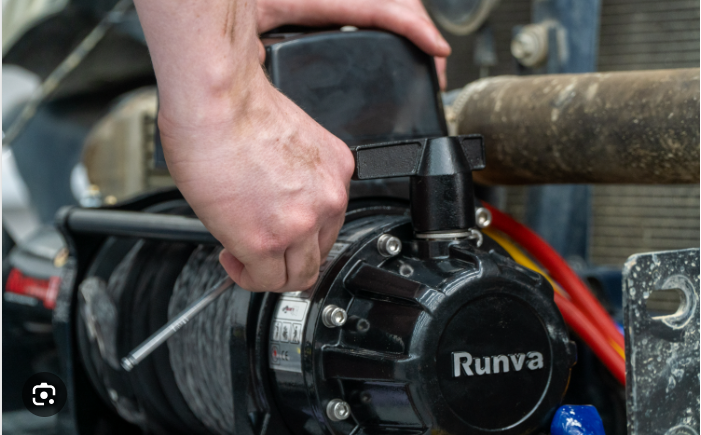
Troubleshooting Your Runva Winch: A Personal Guide to Getting Your Winch Back in Action
We’ve all been there—you're out in the great outdoors, ready for an adventure, and suddenly your winch decides it’s on vacation. It can be frustrating, right? But before you panic or jump to file a warranty claim, I’ve put together this guide to help you troubleshoot some of the common issues you might face with your Runva winch.
I've learned that more often than not, the solution is right in front of you. With a little patience and a few checks, you can get your winch up and running again. Let’s dive into some troubleshooting tips that have saved me—and many others—a lot of headaches.
1. Winch Not Working at All? Here's What to Check:
I remember the first time this happened to me. I thought, “Oh no, my winch is done for!” But in reality, it was just a simple connection issue. So, here’s what you should do:
- Check all the connections: Make sure the connections on the winch motor are clean and tight. Sometimes, corrosion or a loose wire can be the culprit. I once discovered a cable was barely attached—fixed it in seconds!
- Inspect the control box: Pop the cover and ensure everything is in place. It’s amazing how just tightening a connection can solve your problem.
- Test your battery: Make sure your battery connections are clean and secure, and that your battery has at least 650CCA (the minimum required for any 4x4 electric winch). I once overlooked this, and my winch just wouldn’t budge—turns out the battery couldn’t handle the load.
2. Winch Only Works in One Direction?
This one threw me for a loop the first time it happened. The winch pulled in just fine but wouldn’t let out. After a bit of digging, here’s what I found works:
- Check your motor connections: Again, it comes down to those pesky cables. Make sure everything is tight and clean.
- Switch the yellow and red cables (F1 and F2): If the motor runs in the opposite direction after this, the issue might be with your solenoid.
Trust me, when I figured this out, it felt like I’d unlocked a whole new level of winch wisdom!
3. Winch Motor Trying to Turn but the Drum Won’t Budge?
This could be a sign that your winch brake needs some attention. Brakes on a winch wear down over time, and adjusting them is part of regular maintenance. I’ve had to adjust mine a couple of times, and while it’s not the most fun task, it’s straightforward.
- Brake adjustment: Don’t worry—brakes are consumable items, and adjusting them is not a big deal. Just make sure to do it regularly to avoid bigger issues.
4. Winch Running Slower Than Normal?
I remember noticing my winch slowing down and thinking it was on its last legs. Thankfully, the fix was simple:
- Check connections: Tighten and clean everything, from the motor to the battery.
- Look at your rope: Ensure the rope is feeding correctly onto the drum. If it's misaligned, it could slow everything down.
- Power check: Always verify that your battery is 650CCA or above. If it’s underpowered, your winch will struggle.
5. Winch Motor Heating Up?
Overheating is never a good sign, but it doesn’t always mean something major is wrong. When my motor started heating up, here’s what I did:
- Repeat the usual checks: Clean and tighten all connections, check the rope alignment, and ensure your earth cable is properly grounded.
- Battery check: If your battery isn’t strong enough, it can put unnecessary stress on your winch motor and cause it to heat up.
6. Winch Letting Go Under Load?
This is usually a brake issue. If your winch is letting go when under load, it’s time to adjust or replace the brake. I’ve been there—it’s frustrating, but with a little maintenance, you’ll be back in business.
- Brake adjustment or replacement: It’s a simple fix that can make a world of difference.
Final Thoughts
I’ve come to realize that troubleshooting your winch doesn’t have to be a daunting task. Sometimes it’s just about taking a step back, going through these simple checks, and getting your hands a little dirty. Most of the time, the problem is a quick fix that doesn’t require sending in a warranty claim or getting professional help.
By taking the time to learn how your winch works and understanding these basic troubleshooting steps, you can save yourself a lot of time and stress. And hey, the next time your winch acts up, you’ll be the one calmly solving the problem while everyone else watches in awe.
Happy winching! 😊
